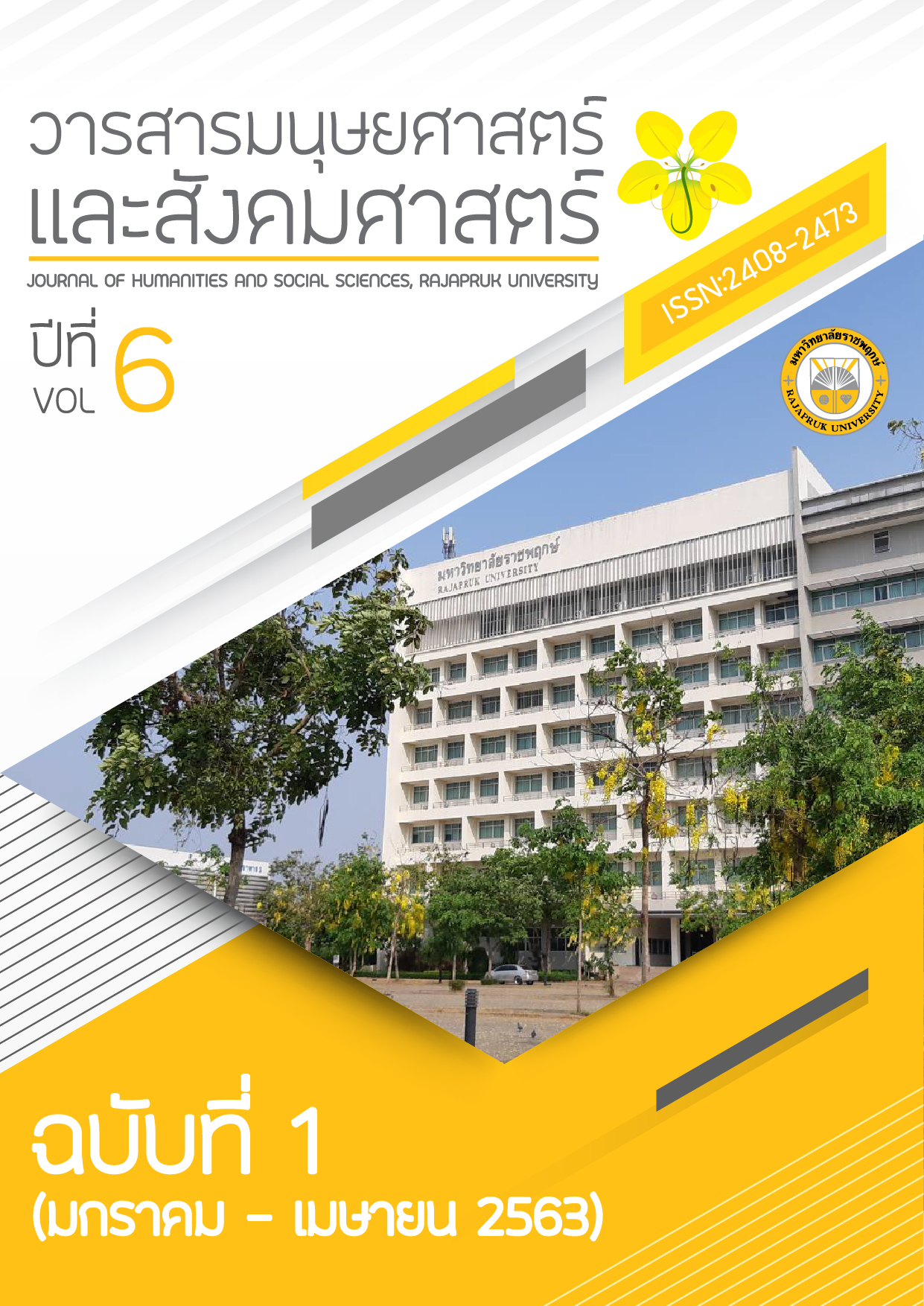Model for the Performance of the Dance Performance: A Case Study of Thao Mahaprom Erawan Shrine Ratchaprasong, Bangkok
Main Article Content
Abstract
The objectives of this research were to study the style of votive dance performance: A case study of Thao Mahaprom Erawan shrine, Bangkok. In order to preserve the performance of the votive drama. This research was conducted with analysis from relevant documents. Interviews from people who know related parties and have questions or group discussions. The study found that the dance dramas have existed since the Ayutthaya period, consisting of Chatri, Nok and Niang plays that shows the uniqueness of the traditional dance drama emphasize the art of dancing, lyrics, and tradition in conducting the matter. The music adds to the melodiousness of the rhythm, style, dance and mood of the song together, called Traditional dance drama as well as the votive dance performances of the Brahma Erawan shrine caused by human beliefs to the goddess arak worship between those who respect sacred things which is an anchor for the minds of men with the display format in the area of shrine and used from 2-8 actors, with five instruments, such as xylophone, drums, tambourines, small cymbals, big cymbals, small gongs to perform in the performance. At present, there are reduce some musical instruments, such as drums, plastered nails, large plastered nails to save space on the stage and more convenient for performances. There is a performance of dancing in one count or one performance depending on the employer. To worship with the guardian deities and sacred objects that they respect. This votive dance drama has evolved from ancient drama. In the past, the main instruments used in the Chatri drama were Chatri drums and grabs. The actors have to dance according to the roles and requests with a chorus of support as for the dialogue, the actors were the negotiators themselves. The dance moves to fast. The popular stories include Phra Suthon Manohra, Sangthong Manipichai, etc. Currently, Chatri dramas is hard to find because the song of the verse was changed.
Article Details
References
มนตรี ตราโมท. (2545). ปกิณกะเกี่ยวกับนาฏศิลป์และการละเล่นของไทย. กรุงเทพฯ: เจริญวิทย์การพิมพ์.
มาลินี งามวงค์วาน. (2537). ละครแก้บนที่ศาลหลักเมืองกรุงเทพมหานคร. วิทยานิพนธ์ศิลปศาสตร
มหาบัณฑิต นาฏศิลป์ไทย: จุฬาลงกรณ์มหาวิทยาลัย.
วรรณา สุขปัญญา. (1 มีนาคม 2562). สัมภาษณ์. หัวหน้าคณะละครดำรงค์นาฏศิลป์. ศาลท้าวมหาพรหมเอราวัณ ราชประสงค์.
ศิรดา พานิชอำนวย. (2549). ความเชื่อและพิธีกรรมละครชาตรีคณะศิษย์จันทร์ฉายวิเศษศิลป์ อำเภอวิเศษชัยชาญ จังหวัดอ่างทอง. วิทยานิพนธ์ศิลปศาสตรมหาบัณฑิต (ไทยศึกษา) มหาวิทยาลัยรามคำแหง.
สุนิศา โพธิแสนสุข. (1 มีนาคม 2562). ผู้สัมภาษณ์. หัวหน้าคณะละครดำรงค์นาฏศิลป์. ศาลท้าวมหาพรหมเอราวัณ ราชประสงค์.
สุมนมาลย์ นิ่มเนติพันธ์. (2543). การละครไทย. กรุงเทพฯ: ไทยวัฒนพานิช.
สุมิตร เทพวงษ์. (2541). นาฏศิลป์ไทย. กรุงเทพฯ: โอเดียนสโตร์.
อมรา กล่ำเจริญ. (2553). สถานภาพการคงอยู่ของละครชาตรีในประเทศไทย. กรุงเทพฯ: โอเดียนสโตร์.
อรวัฒนา ชินพันธ์. (2553). รูปแบบการแสดงละครรำแก้บนประกอบพิธีกรรมความเชื่อ กรณีการแสดงที่วัดบ้านแหลม จังหวัดสมุทรสงคราม. มหาวิทยาลัยราชภัฏสวนสุนันทา.


